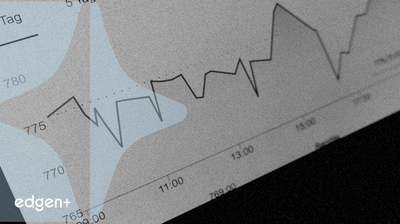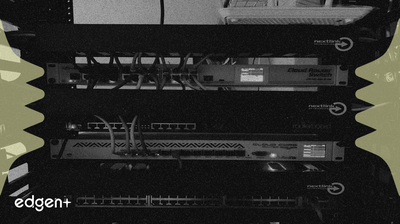Related News

Lithium Carbonate Surges Past 100,000 Yuan/Ton in China Amid Supply Disruptions
## Executive Summary The most-active lithium carbonate futures contract on the Guangzhou Futures Exchange has rallied past the 100,000 yuan ($14,065) per ton threshold, marking a significant price movement in a market still grappling with long-term oversupply. This surge, representing a new high since June 2024, is not fueled by a fundamental shift in demand but is instead a reaction to supply-side disruptions, including production halts and strategic forecasts from major producers. The event highlights the inherent volatility in the lithium market, where short-term tightness can temporarily overshadow broader supply gluts, creating a complex and uncertain environment for investors and electric vehicle (EV) manufacturers. ## The Event in Detail The November 2025 lithium carbonate contract has seen its price increase by over 70% in recent months, culminating in its breach of the psychologically significant 100,000 yuan/ton mark. This rally sharply contrasts with the commodity's performance over the last year, where prices crashed by 80% from their peak in 2022 due to slowing global EV sales and the phasing out of subsidies. The immediate catalyst for the reversal appears to be supply-side factors, including a production halt that removed approximately 65,000 metric tons of lithium carbonate equivalent—roughly 6% of global supply—from the market. This has created immediate market tightness, overriding, for the moment, the larger narrative of oversupply that is expected to persist into 2025. ## Market Implications Despite the sharp increase in lithium costs, EV manufacturers have remained notably silent. This is attributed to several factors, including an existing oversupply of lithium carbonate, sufficient inventories, and the ability to reactivate idle production capacity if needed. Furthermore, major battery producers like **CATL** have developed integrated layouts that provide a buffer against short-term price swings. However, a sustained rally could pressure margins, particularly for mid- to high-end EVs, and may accelerate a shift from price-based competition to value-based competition in the auto sector. Compounding these dynamics, China introduced new export restrictions on advanced lithium-ion batteries and key materials in October, a move poised to impact global supply chains. ## Expert Commentary Market analysts emphasize the disconnect between the current price rally and underlying market fundamentals. One report notes, *"The lithium market's dramatic reversal from oversupply to potential shortage conditions demonstrates how quickly commodity fundamentals can shift, particularly when supply disruptions coincide with accelerating demand growth in critical sectors like energy storage and electric vehicles."* Adding to a bullish long-term outlook, the chairman of **Ganfeng Lithium Group Co**, a major Chinese producer, forecasted demand growth of 30% or even 40% for the metal in 2026, which he stated could drive lithium carbonate prices above 150,000 yuan or even to 200,000 yuan a ton. ## Broader Context China holds a commanding position across the global lithium supply chain, giving it significant influence over pricing. Coordinated policy between Chinese producers and government agencies can amplify price movements, as seen in the current scenario. The market is also being shaped by technological shifts, such as the growing popularity of lithium iron phosphate (LFP) batteries in EVs, which has channeled most demand toward lithium carbonate. The current situation underscores the tension between short-term, supply-driven price shocks and the longer-term outlook of a market that is structurally oversupplied. Investors are closely monitoring Chinese regulatory developments, energy storage deployment rates, and progress on alternative supply sources to navigate the sector's volatility.

U.S. Non-Farm Payrolls Beat Expectations in September; Unemployment Rate Rises to 4.4%
## Executive Summary The latest U.S. labor market report presents a mixed economic picture, with non-farm payrolls for September showing a job gain of 119,000, substantially exceeding the consensus forecast of 51,000. However, this sign of labor market strength was contrasted by a separate household survey showing the unemployment rate rising to 4.4%, a four-year high and slightly above the 4.3% that economists had anticipated. ## The Event in Detail According to data from the U.S. Bureau of Labor Statistics, the 119,000 increase in non-farm payrolls marked a significant acceleration from the prior month's revised figures. This headline number defied widespread expectations for more moderate job growth. Alongside the employment figures, average hourly wages registered a modest increase of 0.2%, a critical data point in assessing inflation trends. Contradicting the payroll data, the unemployment rate ticked up from 4.3% in August to 4.4% in September. This increase suggests that despite robust hiring in certain sectors, more individuals were actively seeking work but unable to find it, pointing to potential underlying slack in the labor market. ## Market Implications The conflicting data points introduce significant uncertainty for financial markets and Federal Reserve policy. A stronger-than-expected job creation figure typically supports a more hawkish monetary policy stance, as it suggests the economy can withstand higher interest rates. It can be viewed as a positive indicator for economic resilience. However, the simultaneous rise in the unemployment rate complicates this interpretation. It provides ammunition for officials who may advocate for a more cautious or dovish approach, arguing that the labor market is not as tight as the headline payroll number would suggest. This ambiguity may lead to increased volatility as investors recalibrate their expectations for future interest rate decisions. ## Expert Commentary Wall Street economists had largely projected a more subdued figure, with a **Reuters** survey showing an expected increase of only 50,000 jobs. The significant beat on the headline number caught many market participants by surprise. However, some analysts urge caution, noting that initial payroll reports are often subject to substantial future revisions. The initial estimate for benchmark revisions already suggested that job growth in the prior year was weaker than first reported, implying that a single month's data should be interpreted with care. ## Broader Context This jobs report arrives at a crucial moment for the **Federal Reserve**, which is navigating its dual mandate of maintaining price stability and achieving maximum employment. The data offers no clear resolution. While robust job growth could be interpreted as fuel for inflation, a rising unemployment rate signals the opposite. As a result, future monetary policy decisions will likely depend heavily on incoming inflation data to resolve the ambiguity presented by this complex labor market report. The market will now watch for commentary from Fed officials to gauge how they interpret these mixed signals.

OpenAI's Revenue Surge Fuels AI Infrastructure Boom Amid Power Grid Strain
## Executive Summary **OpenAI's** aggressive revenue growth and infrastructure expansion are validating a prolonged AI capital expenditure cycle. This trajectory signals robust market demand and directly benefits hardware manufacturers and cloud service providers. However, this expansion simultaneously raises critical concerns about the capacity of existing power infrastructure to support this growth. Analysis from major financial institutions and government-backed research indicates that the surge in power demand from AI data centers could create a significant electricity deficit in the coming years, posing a material risk to the sector's development. ## The Financial Trajectory Recent financial disclosures and executive commentary paint a picture of exponential growth for **OpenAI**. The company is projected to exceed an annualized revenue run rate of $20 billion by the end of 2025, a significant increase from previously reported figures. Founder **Sam Altman** has suggested long-term revenue could reach $100 billion by 2029, signaling deep confidence in the commercialization of its AI models. This financial performance is directly funding a massive buildout of what industry analysts term "**AI factories**"—large-scale infrastructure designed for developing and deploying large language models. This strategy entails a significant upfront capital investment, creating a "J-curve" where expenditures currently run far ahead of revenue, with the expectation of substantial future returns. ## Market Implications: The AI Capital Expenditure Cycle The financial momentum of **OpenAI** confirms that the AI capital expenditure cycle is set to continue its intense pace. This trend is a primary growth driver for the broader technology ecosystem, particularly for semiconductor companies providing specialized chips and hyperscale cloud providers offering the necessary infrastructure. The market structure is concentrating revenue among a handful of these "**AI factory**" operators, including **OpenAI**, neoclouds, and major hyperscalers, who are funding the buildout. The vast majority of enterprises are expected to consume AI via APIs from these operators rather than building their own large-scale facilities, further cementing the market position of these dominant players. ## Expert Commentary: Infrastructure Strain and Power Deficits While the AI industry's expansion is unprecedented, its dependency on physical infrastructure, particularly electricity, is emerging as a critical bottleneck. **Morgan Stanley** has issued a stark warning, forecasting that the United States could face a power shortage of up to 20% by 2028, driven almost entirely by the energy demands of AI data centers. This concern is supported by data from **Goldman Sachs Global Investment Research**, which highlights the explosive growth in power demand in data center hubs like Northern Virginia. **Dominion Energy's** forecasts for the region show a steep, unslowing demand curve for electricity. Furthermore, research backed by the Department of Energy projects that annual energy use from U.S. data centers could nearly triple by 2028, potentially consuming up to 12% of the nation's total electricity. ## Broader Context: The Trillion-Dollar Bet on AI Infrastructure The current market dynamics represent a multi-trillion-dollar bet on the future of artificial intelligence. The high capital expenditures are viewed as a necessary, long-term investment to secure a strategic advantage in the AI economy. However, the race for AI dominance is now inextricably linked to securing and developing energy resources. The strain on power grids is no longer a peripheral issue but a central challenge to the industry's growth trajectory. This reality is expected to trigger a new wave of investment, not just in AI hardware and software, but in power generation and transmission infrastructure to support the digital factories of the future.
